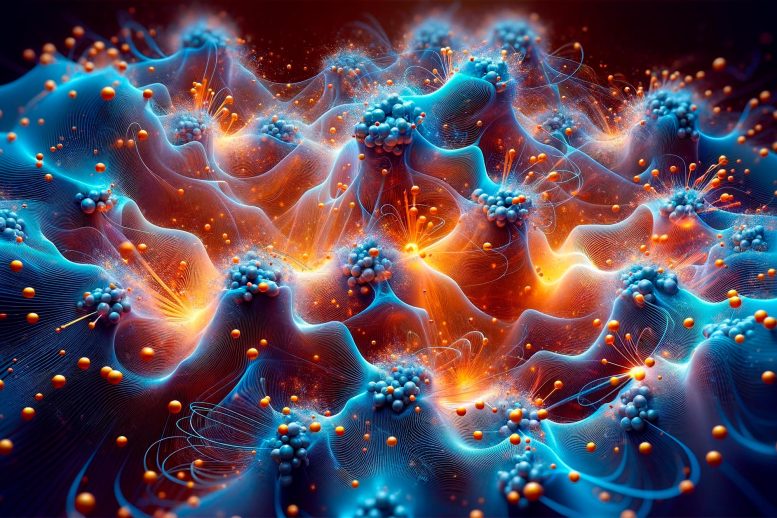
Utilizing ultracold quantum gases, physicists led by Rudolf Grimm brought to life Lev Landau’s theoretical quasiparticles, simulating electron behavior in solids. The team discovered that these quasiparticles can display both attractive and repulsive interactions, highlighting the fundamental role of quantum statistics in their behavior.
Physicists, building on Lev Landau’s theory of quasiparticles, used ultracold quantum gases to simulate electron behavior in solids. Their recent experiment revealed that these quasiparticles can have both attractive and repulsive interactions, underscoring the significance of quantum statistics.
An electron moving through a solid generates a polarization in its environment due to its electric charge. In his theoretical considerations, the Russian physicist Lev Landau extended the description of such particles by their interaction with the environment and spoke of quasiparticles. More than ten years ago, the team led by Rudolf Grimm at the Institute of Quantum Optics and Quantum Information (IQQOI) of the Austrian Academy of Sciences (ÖAW) and the Department of Experimental Physics of the University of Innsbruck succeeded in generating such quasiparticles for both attractive and repulsive interactions with the environment.
For this purpose, the scientists use an ultracold quantum gas consisting of lithium and potassium atoms in a vacuum chamber. With the help of magnetic fields, they control the interactions between the particles, and by means of radio-frequency pulses push the potassium atoms into a state in which they attract or repel the lithium atoms surrounding them. In this way, the researchers simulate a complex state similar to the one produced in the solid state by a free electron.
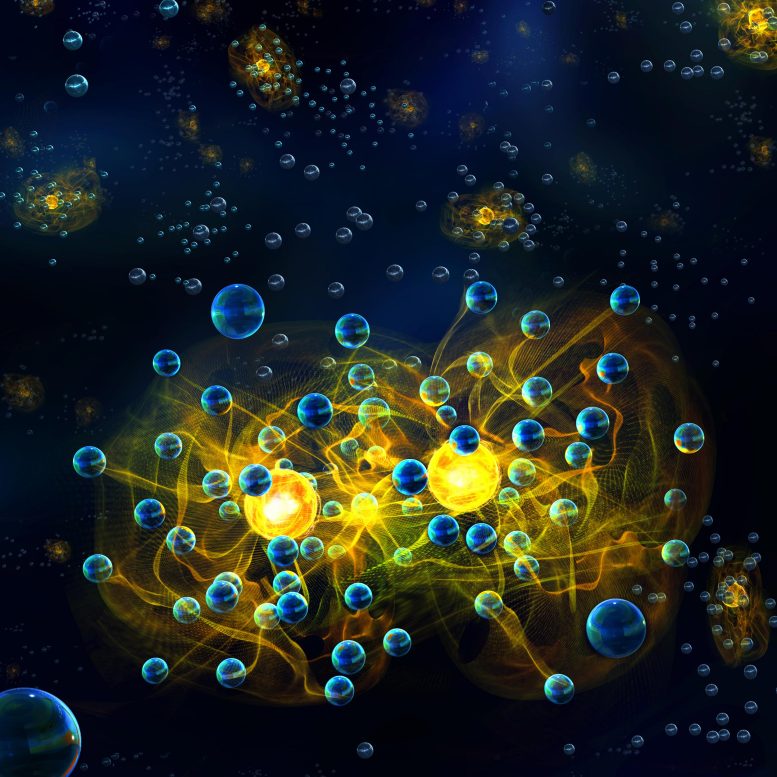
Potassium atoms (yellow) surrounded by lithium atoms (blue) form polarons that interact with each other. Credit: IQOQI Innsbruck/Harald Ritsch
A Closer Look at Solids
Now, the scientists led by Rudolf Grimm have been able to generate several such quasiparticles simultaneously in the quantum gas and observe their interactions with each other. “In a naive notion, one would assume that polarons always attract each other, regardless of whether their interaction with the environment is attractive or repulsive,” says the experimental physicist. “However, this is not the case. We see attractive interaction in bosonic polarons, repulsive interaction in fermionic polarons. Here, quantum statistics plays a crucial role.”
The researchers have now been able to demonstrate this behavior, which in principle already follows as a consequence of Landau’s theory, in an experiment for the first time. The theoretical calculations for this were done by colleagues from Mexico, Spain, and Denmark. “High experimental skills were required to implement this in the laboratory,” explains Cosetta Baroni, first author of the study, “because even the smallest deviations could have skewed the measurements.”
“Such investigations provide us with insights into very fundamental mechanisms of nature and offer us excellent opportunities to study them in detail,” says Rudolf Grimm excitedly.
Reference: “Mediated interactions between Fermi polarons and the role of impurity quantum statistics” by Cosetta Baroni, Bo Huang, Isabella Fritsche, Erich Dobler, Gregor Anich, Emil Kirilov, Rudolf Grimm, Miguel A. Bastarrachea-Magnani, Pietro Massignan and Georg M. Bruun, 26 October 2023, Nature Physics.
DOI: 10.1038/s41567-023-02248-4



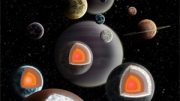
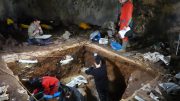
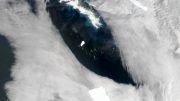

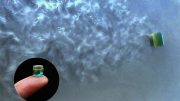
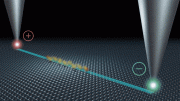
The quasiparticles can display both attractive and repulsive interactions. According to the theory of topological vortex gravitational field, the physical roots of attractive and repulsive interactions are the accelerated and decelerated rotations of the topological vortices that make up the quasiparticles.